‘Baldur’s Gate 3’ Tries to Capture the Chaos of D&D Gone Horribly Wrong
February 27, 2020The Baldur's Gate 3 demo is going hilariously, spectacularly wrong in a way that feels more like an actual D&D session than any PC adaptation I've ever played. The party is in the introductory zone of the game, on their second encounter, and it looks like they're on the cusp of a Total Party Kill. The kiss of the death might be, after the party's cleric was knocked on her ass by a witch-bolt and a bunch of thieves moved to surround her, the rogue decided to throw a flaming grease grenade in the crowd setting everyone on fire but especially the cleric, who was instantly burned to a cinder.
Swen Vincke, the Larian CEO who is driving today's demo, takes a fatalist stance. "She was dead anyway—wait, no, she wasn't. Huh. I thought she was."
In spite of, or perhaps because of, Vincke's chaotic approach to the game he's demonstrating for a crowd of writers in New York for the last stop on this press tour, Baldur's Gate 3 looks incredibly fun, and pretty much exactly like the thing Divinity: Original Sin fans imagined when it was announced that the developer would be reviving the revered Bioware series. It's a game of unexpected twists and dense layers of possibility, where even bad luck atop bad decisions can lead to interesting scenarios rather than failure-spirals. It looks dynamic and surprising in the ways similar to good tabletop campaigns.
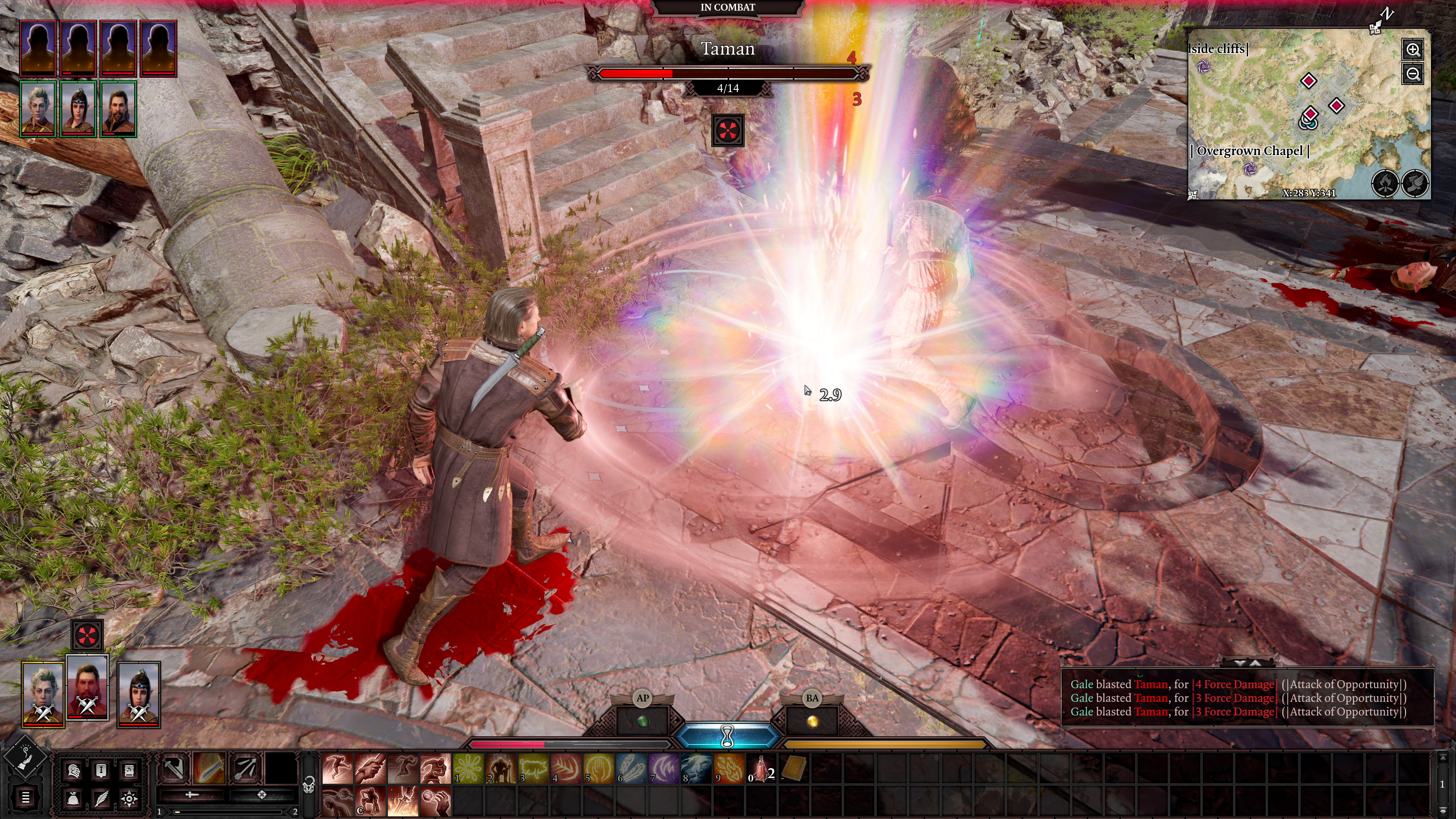
But Baldur's Gate is also not wasting time doing a lot of table-setting. While two of the encounters we see demonstrated are against low-level bandits and an ill-fated group of goblin fighters, the campaign itself has its focus on greater, more existentially devastating threats that only rarely come out to play in a D&D campaign. The opening cinematic features a Mind Flayer systematically infecting imprisoned characters with a Mind Flayer "tadpole" that (rather horrifyingly) burrows in through the eye of its victim and takes up residence in their bodies. Then, in short order, we see the Mind Flayer leave his victims to await their transformation while he goes to the deck of his vast, living warship as it descends on the city of Baldur's Gate, the ship slaughtering dozens of citizens as its enormous tentacles reduce people to ash with a single touch. In pursuit of the warship, emerging from some kind of cosmic void that tears open the sky, is a trio of dragons who immediately begin tearing the Mind Flayer's ship to pieces. After a chaotic pursuit featuring multiple warps to different parts of the world, the ship warps to safety and crash-lands.
Which brings us to one of the game's first major decisions. In keeping with the Divinity: Original Sin games, you have the option of creating your own character from scratch or choosing an "origin story" character that comes with special narrative content around a detailed backstory. The origin characters also comprise a good number of the game's companion characters, but when they are the main character there are special aspects of their arc that is under the player's direction. In this case, we were shown Astarion, who seemed like a real asshole. A disgraced nobleman who used his position as a local magistrate to serve a vampire clan by feeding them prisoners, he was eventually too corrupt even for them and was effectively sent to serve as the personal slave of a powerful vampire. Astarion has the affected sophistication of a true decadent, like one of Richard E. Grant's less likable characters.
That said, even if you roll your own character, Vincke explains later that there will be other ways in which the narrative is tailored to your choices about race, class, and background, in character creation, so it shouldn't feel like you're playing with a generic "blank" character as opposed to the custom-created ones. No matter who you choose to play as, however, Baldur's Gate 3 opens on this central dilemma: You and your companion characters are infected by the Mind Flayers' tadpole, and supposedly you have only days before it transforms you into a Mind Flayer and you join in their work of infecting and controlling yet more people. But there's another wrinkle to this as well: While finding a way to "cure" your characters by removing the tadpole is the most obvious solution to this problem, there's also something curious about the infection itself. Rather than slowly having your strength and vitality sapped by the tadpole, everyone infected aboard that Mind Flayer ship appears to be thriving. A possibility that quickly occurs to the main character is that this infection might be different in some way, and that this particular version of Mind Flayer enslavement carries with it the possibility to become almost superheroic. While, yes, the responsible thing is to get this Alien-like infection taken care of as quickly as possible… there's a temptation to wait, and see how it plays out.
As you might expect, there are a lot of potential solutions to this problem, with different parties and interests advancing their own. One memorable character we met in the demo, a demon named Raphael, appears early to offer his own kind of bargain to deal with the Mindflayer tadpole, suggesting darkly that every single one of the possibilities the party has considered and will end up pursuing will prove to be a futile, dead-end. The Gillen-esque fiend takes it rather philosophically when the party refuse to do deals with the devil. "Hope," he sighs. "Such a tease."
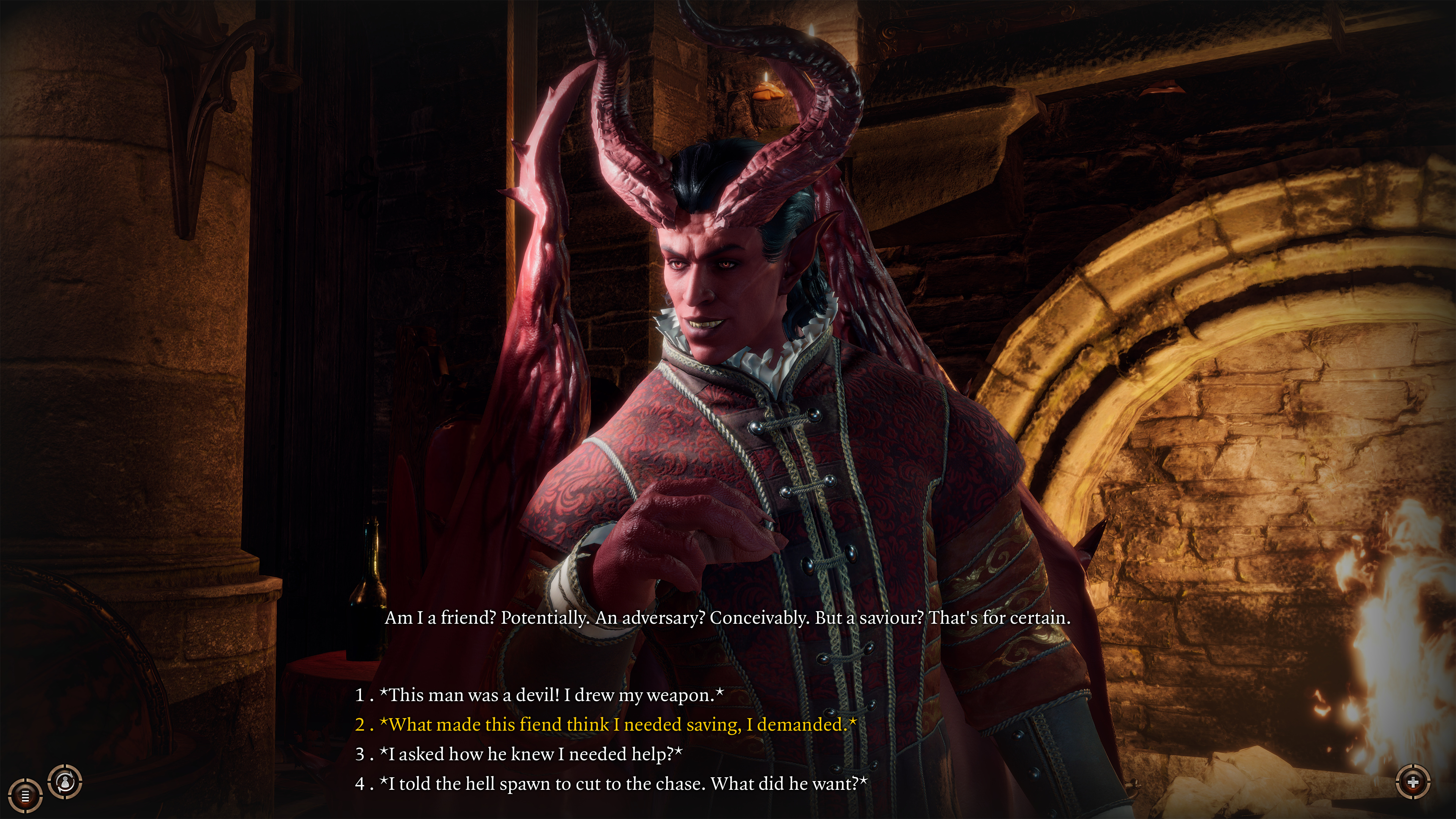
A lot of the major party interactions happen during rests in camp. This being based on D&D, the party will rapidly and regularly run out of hit points and spells, and barring the use of restoration items, the only way to get back into fighting shape is to do a full overnight rest. At which point you get a scene of the party gathered around the campfire at night, and you can go around and chat with different members. As it does for just about every dialogue sequence, the camera cuts away from its overhead-and-behind view of the characters (or if you zoom in, it drops into a nearly over-the-shoulder perspective) and covers the conversation in the familiar shot-reverse shot format, complete with detailed facial animations and gestures.
It's a chance to check-in on how different characters are feeling about the decisions you've made, what they hope to get out of upcoming quests, and decide what direction you want to build these relationships. Romance is a part of this but, as writer (and a former colleague at RPS) Adam Smith explains to me later, the game is pointedly trying to get away from the Bioware model of romance.
"The aim is to have romance develop as a reaction to player choices in the world and building emotional connections," he says. "We want it to feel like a natural part of character development rather than something that is ‘earned’ or ‘won’. Romance isn’t an achievement, it’s part of a relationship, not a bar that you fill up to progress to the next stage and complete."
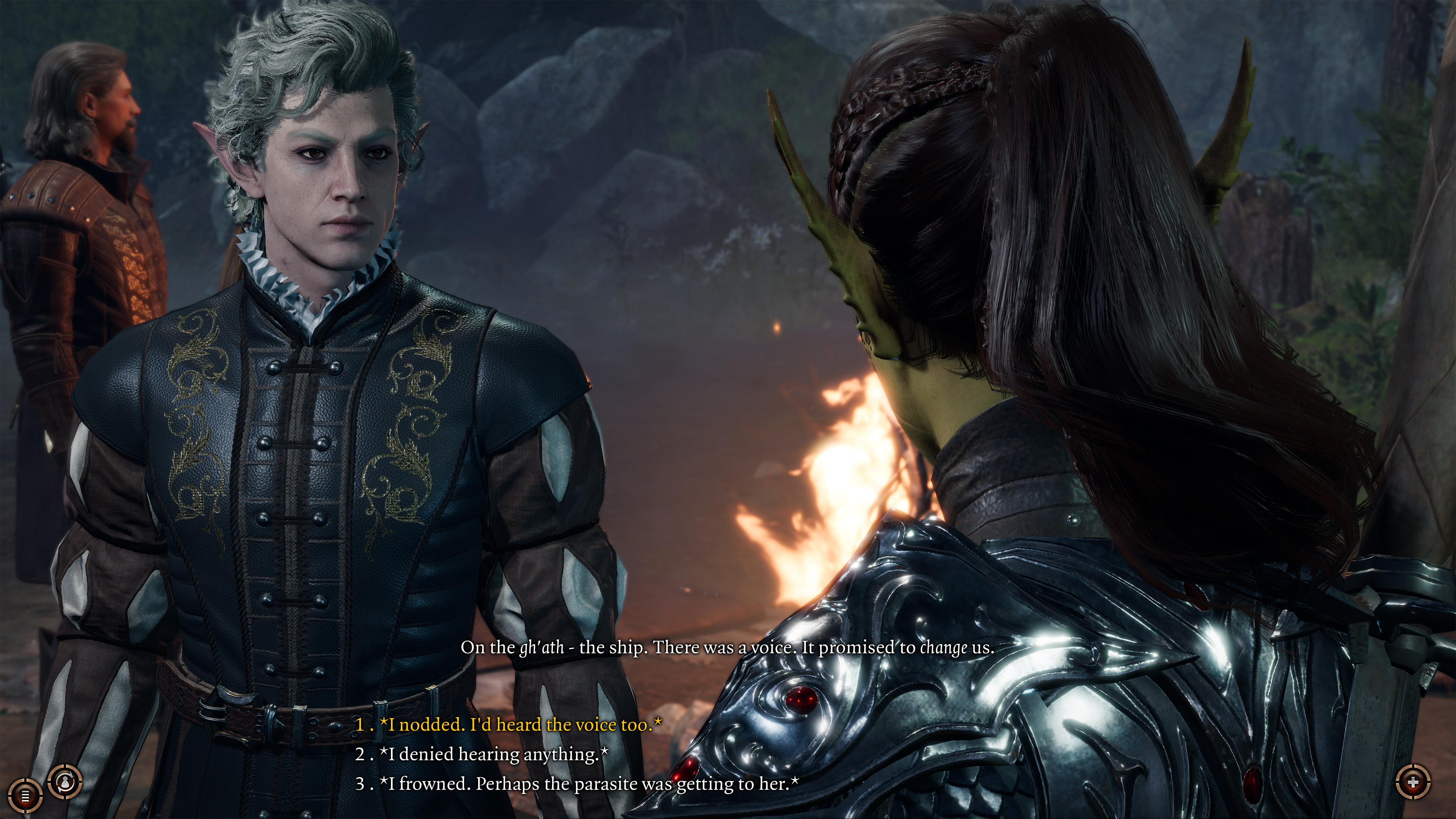
This is not one of Larian's historical strong suits. The early Divinity games prior to Original Sin were laddish in their sensibilities, frequently falling back on smirking sexism to stand-in for humor and casting a leering gaze at female characters. The Original Sin series avoided these pitfalls but also kept sexuality in general at arm's length. Throughout the demo, however, there were allusions to different kinks, and at times it felt a bit like a D&D adventure run by someone who just learned about doms, subs, and wikiFeet.
Vincke knows that the studio's history with this material, and the way it has presented women, has not always been solid.
"I've changed, the team has changed," he says, noting that the studio now employs over well over two hundred people and it's somewhere around a quarter and a third staffed by women (though it's worth noting, the creative team at this press event were all men). "We make games we want people to enjoy, not to upset them."
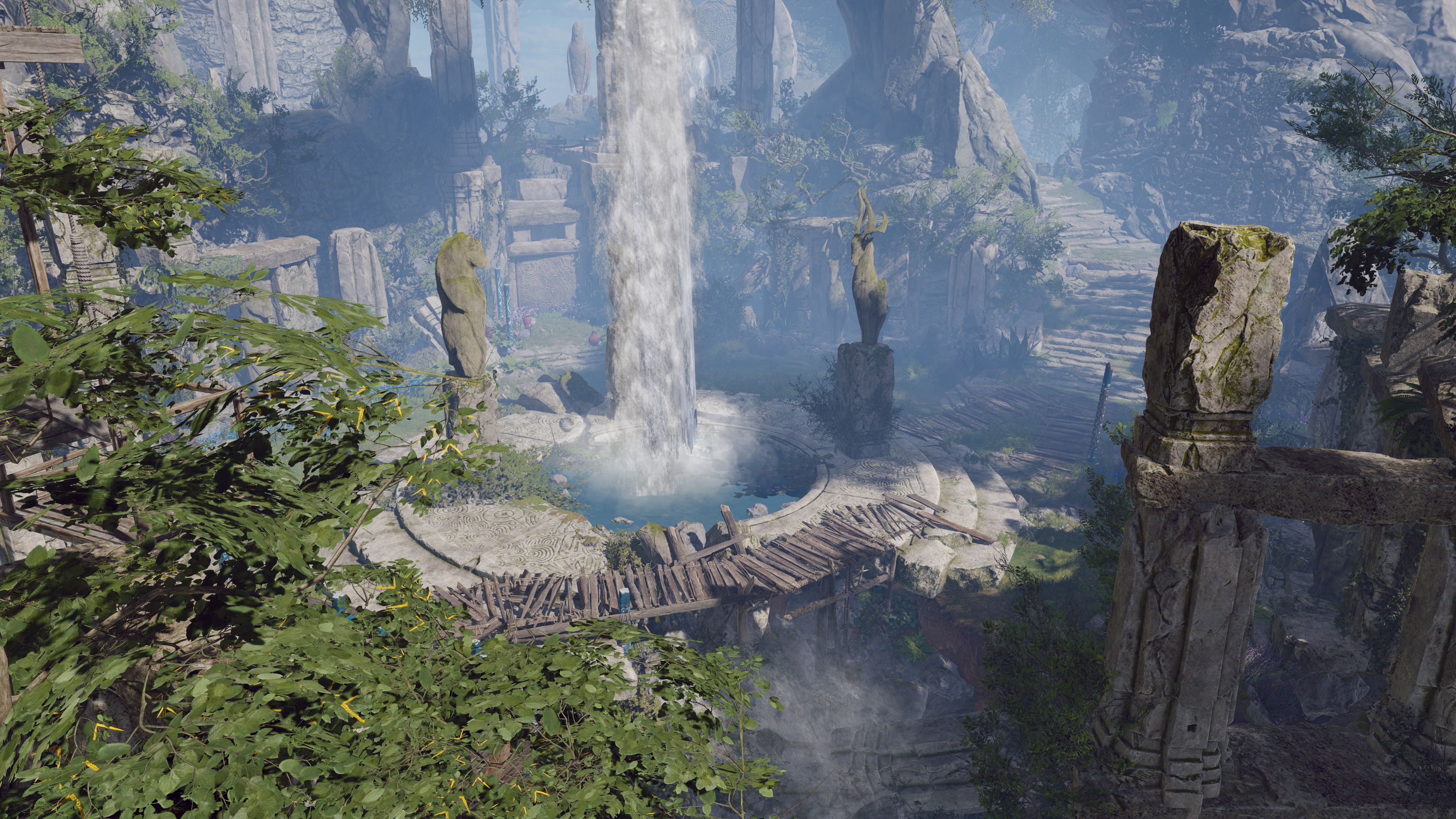
Vincke feels like, if nothing else, the team has better taste now. "We have freedom to create. There's a lot of stuff that we do that could be upsetting for a group that we're not even aware of. It's such a big world, and there's so many people playing video games. We try not to upset anyone. But we do try to create something that makes sense from the point-of-view of the characters who are inside of the game. So given that we're a larger group now, we have more eyes looking at it, and it often happens that somebody from inside the team says, 'Well, that actually could be a problem.' And we have a look and, say, 'Oh, yeah.' And it's almost never intentional. It's just that people are not always aware."
I am curious how this approach plays out with the game's handling of issues around consent and violation. This is, of course, a game about Mind Flayers, the last survivors an empire founded on slavery and mind control. The looming horror of the game's opening is that your characters will lose control of their will and then their own bodies. On top of that, Baldur's Gate 3 can have a definite Gothic-pulp sensibility in its subplots. Astarion the vampire was given the option to feed on his fellow party members during a nightly rest, and we watched a sequence in which he made the decision to attempt a stealthy nighttime assault on the party's cleric. To be clear, this wasn't portrayed as some gleeful, "we let you be the bad guy" transgressive option. Astarion is a sad and squalid character in many ways, and a lot of it is tied to the fact that he's lived his life as a vampire who has been under the thumb of other vampires. But in centering these issues in its narrative, Baldur's Gate 3's attempts at relatable pathos risk coming across as alienating prurience.
While some of the choices players can make with these relationships are extremely heavy, many of the most momentous ones still hinge on a roll of the dice. There's a lot of different approaches to each encounter, conversational and otherwise, but many of those approaches also tie back to D&D skill checks. You can have a conversation where you express some skepticism of what another character is saying about their motivations, but you can also select an option to act on that skepticism and roll a perception check against that character as you attempt to discern and reach firm conclusions about the trustworthiness of what you're hearing.
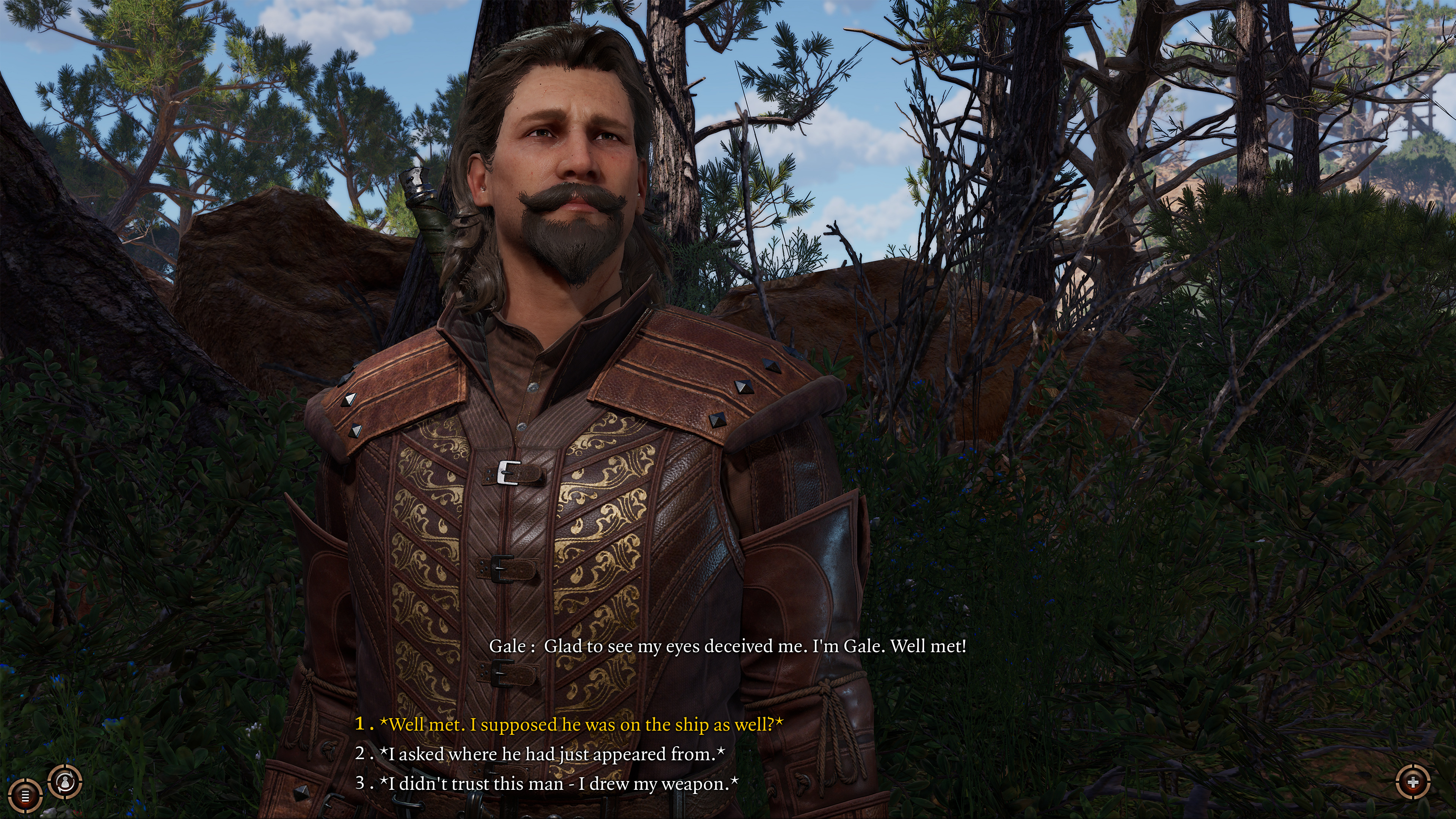
Each time you roll a check like this, the game brings up an overlay showing the iconic 20-sided die that is D&D's chief arbiter. In a tabletop setting, the die-roll is modified after the fact based on stats and other circumstances, but for this demo at least, the modifiers are applied to the target number that the roll has to meet-or-beat. It evokes the drama of these checks, but without bogging the player down in the details of the system and how each modifier and attribute is applied.
"We do hide the rules," Vincke says. "You can see it in the tooltips, but we don't want players to have to learn the rules to understand it, so it just happens thematically."
It certainly makes these moments more dramatic, as the moment the die reveals its number, you know how your gamble turned out. In Vincke's case, the answer is usually: "Badly."
Here on the last demo of this press tour, Vincke is trying more oblique solutions to straightforward problems. When raiding an underground crypt, he splits-up the party and sends the Astarion the rogue on an adventure alone. He convinces himself that he can loot a grave of magical treasures and use a speed potion to run the hell away before even if its undead guardians detect him on the way out.
Stealth is a significant component of Baldur's Gate 3. When a character enters stealth mode, the map is overlaid with bright red highlights showing where enemies' detection zones are. That doesn't mean they will detect a character in those areas, only that a character caught in that area will have to pass stealth checks to remain undetected. Each character in the party also gets a little stealth meter above their portrait that fills up as they get into better or worse cover. It recalls to mind the "light gem" from Thief, though it's not quite as nuanced as that system.
While the game unfolds in real-time outside combat, you have the option during stealth sequences to have it unfold in six-second slices, so that you can plan your moves and dart between positions without worrying about getting your timing wrong. This also allows for the entire party to be pre-positioned prior to starting an encounter.
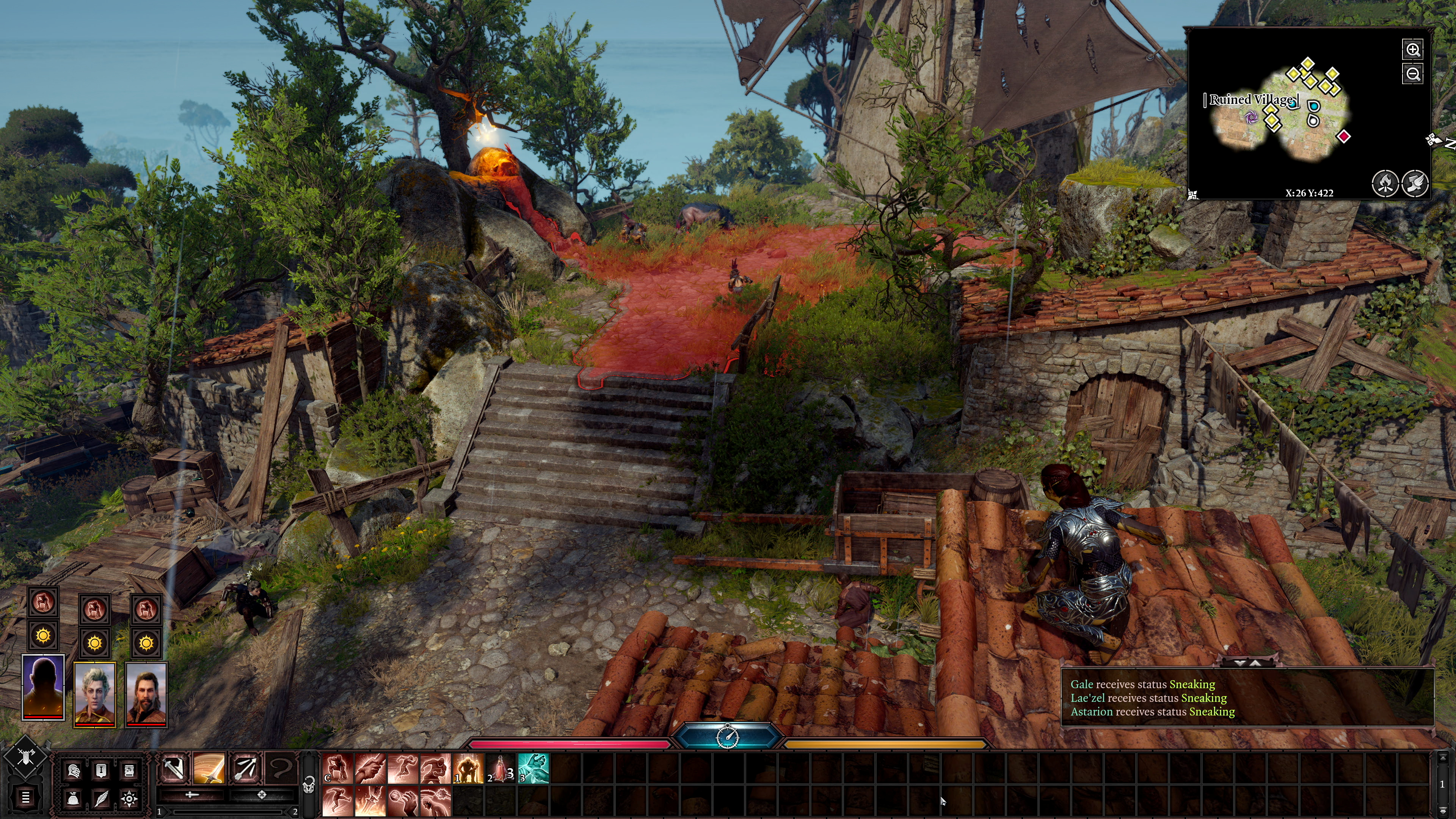
Despite that kind of player aid, Vincke still puts himself in a position where his rogue has to panic-hide amid some old debris in the tomb, just a few feet away from one of the undead guards. This turns out to place him right in its patrol path, and he's detected immediately. He'd tried to cheese this encounter a bit by taking away the most of the guards' weapons while they were still inanimate corpses littered around the tomb, but it turns out that their withered claw-like hands are still plenty capable of tearing him to shreds. If the other party members were nearby, they might be able to come intervene. But they're far away from this part of the dungeon.
Vincke pops his speed potion to give himself two turns of supernatural dashing ability. This gets him away from the skeletons pretty quickly but, crucially, it does not get him out of the crypt and it turns out that speed potions, when they wear off, cause a turn of lethargy. The speedy rogue's escape ends abruptly as fatigue overcomes him. He is stuck, immobile, while the skeletons close in from behind.
The rogue is quickly clawed to the ground and killed, at which point Vincke realizes the party has run out of resurrection scrolls. To salvage the demo, he has to enter console commands and gift his surviving party with a shower of fresh resurrection scrolls so they can go scrape the rogue off the floor.
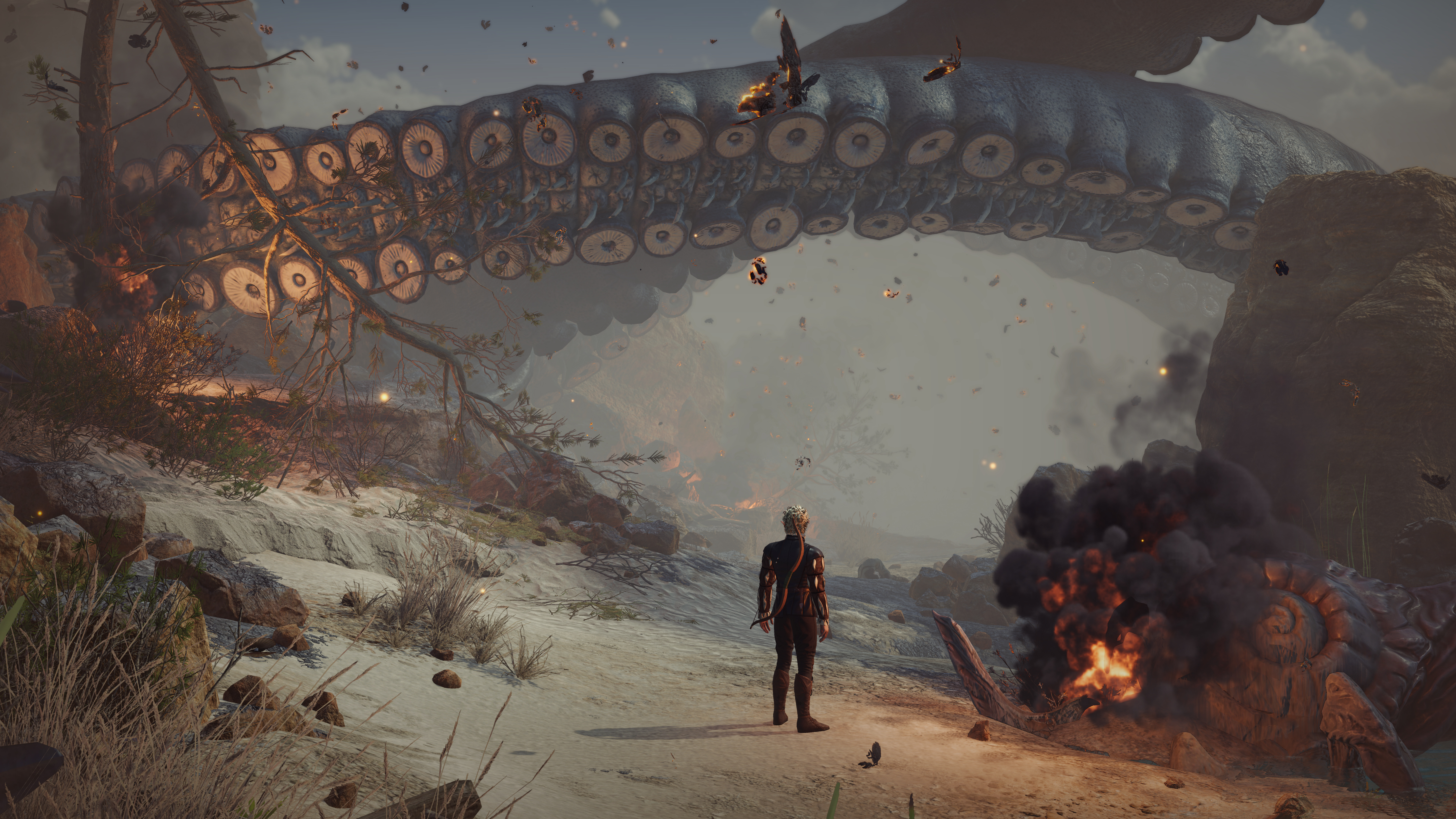
Producer David Walgrave tells me later that watching Vincke demo the game is a "very scary" experience. "Because obviously we had a presentation in our minds that we wanted to do. But we don't always have control over what happens in our games. Which I think is part of their success. People have different experiences and different stories. So it's actually on-brand to also expose that."
It's certainly exposed during the final part of the demo, which again felt like a pretty classic D&D scenario. The party was undercover in a goblin stronghold, and needed to disrupt a ritual being performed by a powerful mage. The group would have the advantage of surprise whenever they made their move, but they were still pretty badly overmatched. The Astarion left the party behind in order to have a conversation with another enemy leader out of earshot of the rest of the party. That's because he was going to sell-out a secret camp of friendly NPCs in order to draw off the majority of the goblin forces in a raid, which would clear the path for the party. But of course, if other characters in the party had heard that exchange, they'd have gone ballistic. So Astarion freelanced it.
This is all done in single-player, with Vincke detaching Astarion from the party and sneaking him through the base alone. But it also gave an idea of how this game will work in multiplayer, a mode that Larian treats with equal priority. So while the rogue went off to pursue his own agenda, the other characters would have been able to conduct simultaneous conversations and investigations of the rest of the goblin camp.
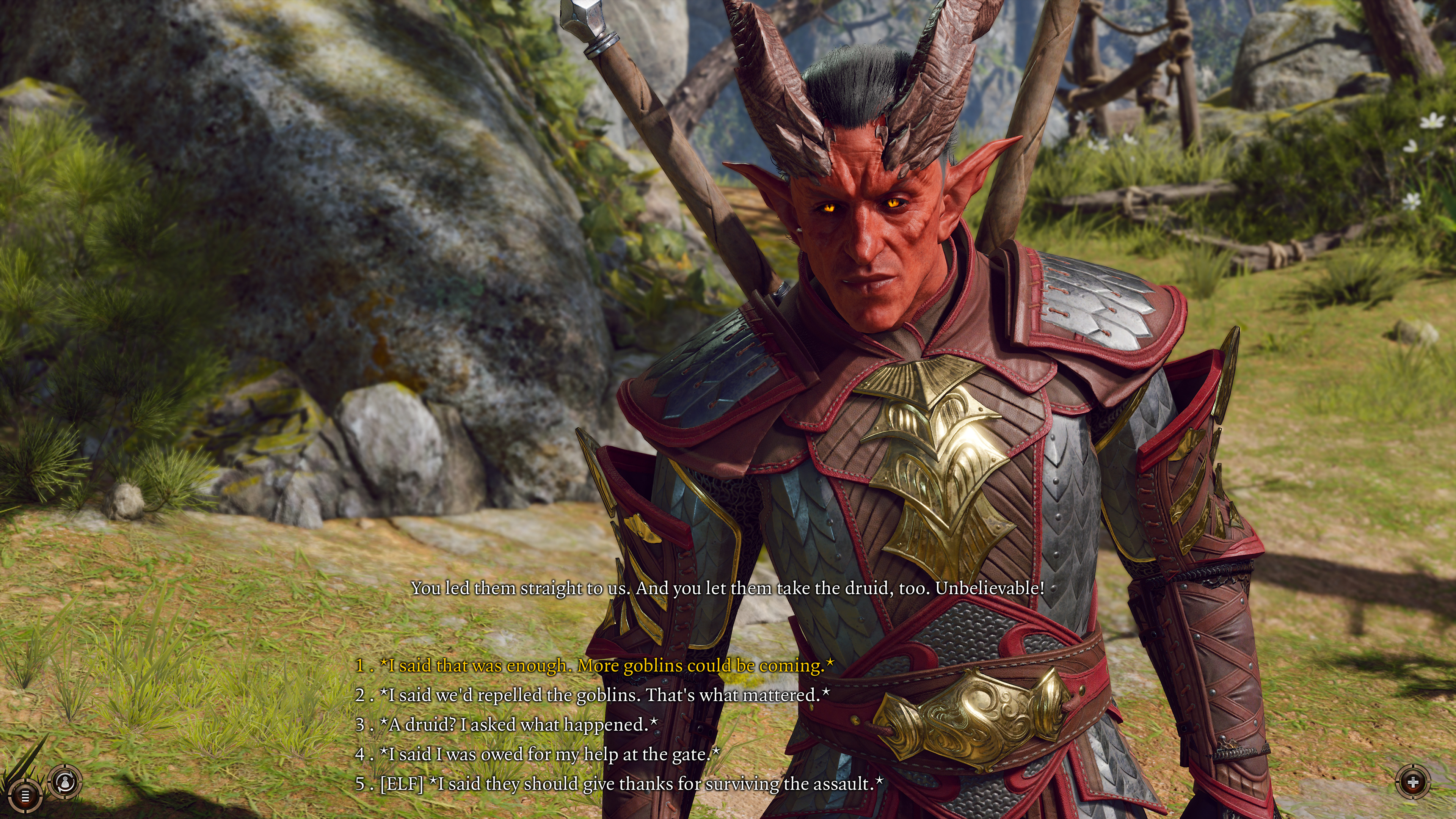
What was really fascinating is when the eventual combat breaks out, a glitch keeps cutting away to the battle at the NPC camp when the "allied turn" comes around in the turn order. That camp is distant from where the party iss, but it suggests that rather than being an event that inevitably happens in the world based on the results of a conversation, it's a real battle that the party could have chosen to disrupt by splitting their efforts between the goblin base and the allied camp.
At its most straightforward, of course, multiplayer allows for a chaotically collaborative approach to combat. We get a taste of that as Vincke talked through how he was going to handle this upcoming boss encounter. He sent Astarion into the rafters above the goblin mage and his henchman, ready to shoot down into the melee. The rest of the party walks up to the mage and disrupts his casting with an impromptu interrogation meant to put him off-balance before the start of their attack.
Vincke's big idea was to have the party's aggressive conversation choices get the mage to initiate combat and charge them, which would bring him close to the edge of a deep pit leading to some catacombs at the bottom of the goblin lair (this kind of stacked, vertically-connected level architecture is something Larian are making a point to design for, which makes me very excited to see what the city of Baldur's Gate itself will look like). In those catacombs were a couple giant spiders that the goblins were using to sacrifice prisoners. Astarion, in the rafters, would use an exploding arrow and detonate it behind the enemy mage, which would throw him over the edge of the pit and into the jaws of the spiders below.
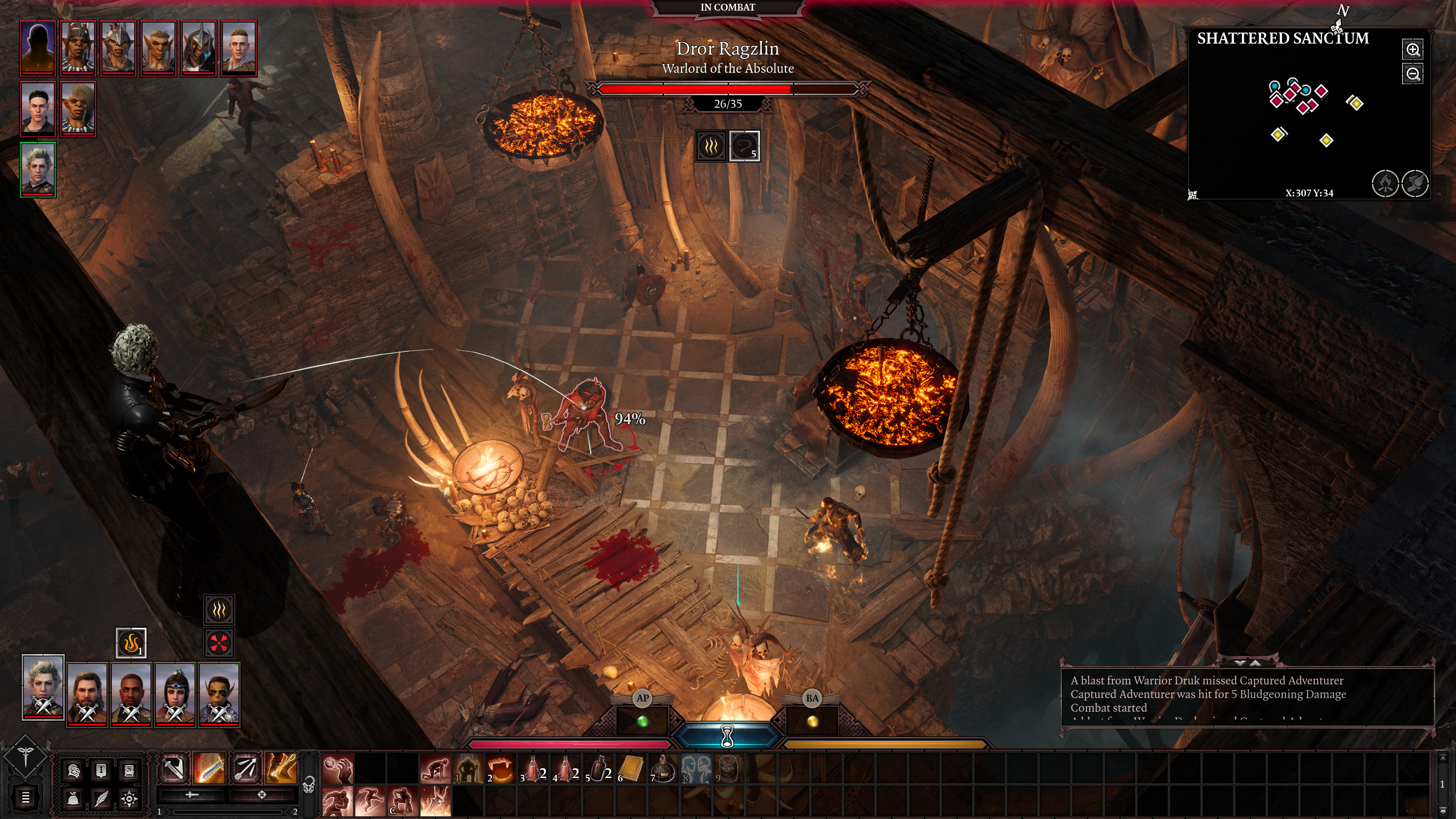
It was a good plan and it works almost exactly like Vincke said it would. Almost. But in a comic miscue that called games like Myth or Breath of the Wild to mind, the powerful blast throws the mage so high in the air that he arcs like a rainbow-three across the entire chasm and lands safely on a narrow outcropping on the other side. Ironically, he is now completely outside the party's ambush zone and his back is planted safely and firmly against a wall where he can take on all comers one-by-one.
The ensuing debacle features a Hail Mary attempt to use a spell of invisibility to get the party's warlock to drag a giant barrel of goblin gunpowder up to the mage and set it off basically right on top of him, only for the warlock to fail his strength check at actually moving the barrel. The spell wears off as the enfeebled warlock attempts to wrassle the barrel across the floor, like a teenager at a kegger. The day's final, complete party-wipe unfolds quickly after.
Still, as the demo ends, I can't stop thinking about how else I might have played that situation. Baldur's Gate 3 looks like a great premise for an RPG, but what impresses me even more was how many different versions of that adventure each sequence seemed to imply. The number of permutations based on potential decisions, tactical approaches, and consequences seems slightly dizzying, and while the Larian folks are quick to admit that the story does still converge on key plot points and events, it feels like they've created a sea of possibilities that a player could happily get lost exploring.

